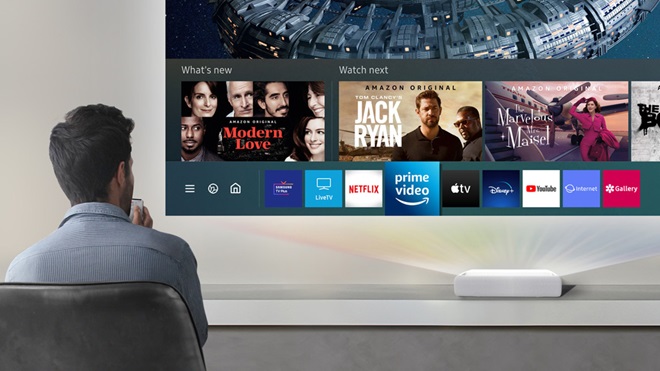On this page:
Our expert testers
Our technical staff includes testers that have sat on Australian Standards committees to make sure the home entertainment devices you buy are safe. They've also had a major influence in getting MEPS (mandatory energy performance standards) implemented so the products you buy today use significantly less energy.
How we choose what we test
We select a range of the latest release projectors in several different video quality and price categories. Once we confirm the models are readily available, our buyers go out and purchase the models to test, just as you would. Because these models are often available at different times of the year, sometimes we can't buy the latest model in a retail store although we know it's coming soon.
Occasionally we'll include a brand that's outside the mainstream to check that we're not missing a bargain, or something better than the main brands can deliver.
How we test
The most basic and important part of our testing is that it's a comparison of the relative merits of each projector against the others in the test. The final scores are based on a range of individual scores which our testers produce as they work their way through the test method.
While you can't always get your room absolutely 'light tight', you definitely get the best out of these products when the lights are low. We gather a lot of information about the projector including its weight, available screen area of the projection, connections (Wi-Fi, Bluetooth etc.) and any other materials supplied with the projector such as 3D glasses and cables.
4K, HD and SD video performance
To check the picture and colour, the lighting in the room is kept very low and three panel members evaluate the picture quality, watching a variety of footage from DVD, Blu-ray and online video.
The panel of testers pays particular attention to a projector's ability to produce images without colour banding, rainbow or screen door effects, jerkiness in pans, blurred or vibrating detail, or colours bleeding in high contrast or very intensely saturated parts of the image. They also check that there are no trails behind fast-moving objects on the screen.
Projectors that do not deliver 4K video are not penalised as the tester scores for HD and SD performance only. Some of the smaller projectors only deliver SD video and for these models, the SD video is the only score used to calculate the overall video performance.
The tester also records an assessment for ambient light, where a small amount of natural light is let into the room and a score for how well the projector performs with some light shown on the screen. Projectors with the ability to throw a strong light onto the screen usually perform better in this test, such as ultra short throw projectors.
Ease of use
We assess how easy it is to use the on-board controls and on-screen displays to perform several common tasks. Careful attention is paid to being able to easily find and use the most commonly used controls, as well as finding those you may only need once in a while.
Remote control
If you've ever lost your remote control you'll know how essential it is for using any home entertainment device. The tester checks the size and spacing of the buttons, dials or touch pads to make sure they're easy to reach, logically grouped and not too close together. Labels should be big enough to read and of sufficient contrast to be easy to read in low light. The remote's overall size and shape is assessed for how well it fits in the hand and how easy it is to use with one hand.
Standby energy
A power meter measures the power used by the projector in standby mode. With home theatre projectors becoming more affordable and the improvement in lamp life and value means you don't just have to use these devices for watching big events and may leave them on more often. This means the standby energy performance is more important compared to the previously common practice of simply turning the projector off when not in use.
Noise
This is measured at right angles to the noisiest side. A sound meter is placed one metre from the projector and takes a reading for 20 seconds.
Test criteria
Prices are recommended retail, as supplied by manufacturers – you should be able to beat this price in any store.
Overall score is made up of:
- 4K video quality (40%)
- HD video quality (15%)
- SD video quality (15%)
- remote control (10%)
- ease of use (10%)
- ambient light quality (10%).
While standby energy and sound quality are accessed and scored, the total does not contribute to the overall score.
4K (UHD) video includes footage from a 4K disc played on a 4K player.
High definition includes footage from a Blu-ray movie, technical assessment of noise and free-to-air broadcast sports footage.
Standard definition includes footage from DVD movies, technical assessment of noise levels, jaggies etc. and free-to-air broadcast sports footage.
We're on your side
For more than 60 years, we've been making a difference for Australian consumers. In that time, we've never taken ads or sponsorship.
Instead we're funded by members who value expert reviews and independent product testing.
With no self-interest behind our advice, you don't just buy smarter, you get the answers that you need.
You know without hesitation what's safe for you and your family. And our recent sunscreens test showed just how important it is to keep business claims in check.
So you'll never be alone when something goes wrong or a business treats you unfairly.
Learn more about CHOICE membership today
Stock images: Getty, unless otherwise stated.



